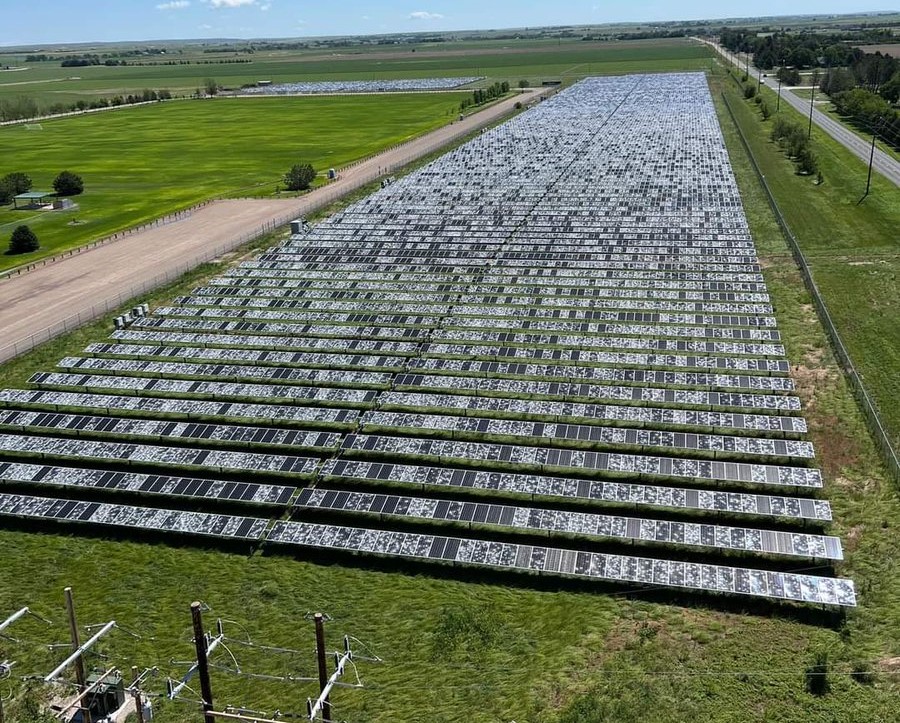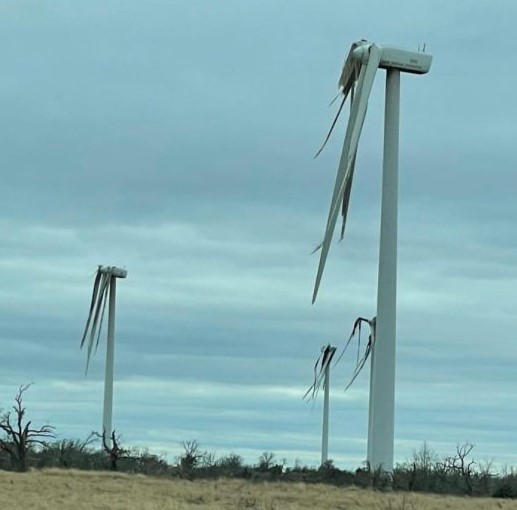In 2019 the City Manager of Scottsbluff, Nebraska proudly cut the ribbon on a huge, multimillion-dollar, 5.2 megawatt solar farm of over 14,000 photovoltaic panels, saying, “This project will help the city achieve its goal to reduce our carbon footprint and stabilize city costs for the next 25 years.” That dream lasted less than four years. In June a massive hailstorm ripped through the area and completely destroyed the facility in about ten minutes. The solar panels were said to be hail-proof, but clearly they were not.

A year earlier, a tornado in North Texas utterly destroyed a line of giant wind turbines. These were sobering wakeup calls to hundreds of cities similarly proud of their state-of-the-art energy systems, but similarly vulnerable to the angry forces of nature.
In fact, these are sobering moments for many of us who dream of being able to generate the world’s electricity without mines or power plants. Maintaining our lifestyles with power generated out of thin air has always sounded appealing. In fact, it has become official public policy in nearly every state and country, so it’s more than just a dream. Way more.
BloombergNEF, perhaps the world’s primary information source on “trends that drive the transition to a lower-carbon economy,” recently published data showing that over the past 18 years global spending on wind and solar power has exceeded $4 trillion.
It’s hard to imagine that such massive worldwide commitments have failed to change the economics of renewable energy, but that is precisely what the data suggests. During the same 18-year period, hydrocarbon use increased more than three times faster than use of wind and solar power. Despite the $4 trillion spent on wind and solar, they still account for only five percent of the world’s energy use. Hydrocarbons (coal, oil, and gas) are still over 80 percent, while the remaining share provided by nuclear, biomass, and hydropower actually decreased from 14 to 13 percent.
It is difficult to understand the failure of such spending to jump-start what millions of people obviously think should be the world’s energy future. What explains the continued growth of hydrocarbon use – despite all the disincentives, regulatory barriers, and competition from heavily subsidized renewables? A great writer named Terry Etam, whose work frequently appears in
BOE Report (Canada’s most widely read daily on energy issues), has a fascinating explanation about how the global discourse on energy has deteriorated in recent years. He calls it “islands of expertise surrounded by oceans of incoherence.”
He is quoting a brilliant thinker called Nate Hagens, an advisor to the “Post Carbon Institute,” a name that clearly telegraphs the group’s political leaning. But Hagens and Etam both refrain from the pop-culture approach to discussing energy, climate, and environment, and they decry the dumbing-down of what should be a generational and evolutionary process. Instead, it has deteriorated into simplistic decisions to ban things we cannot yet live without, and throwing massive sums of money at “solutions” that are not yet ready for prime time. Hagens laments that “society has rewarded reductionist expertise,” giving credibility to overly simplified answers that sound good at the time. Stop burning coal, stop fracking, save the river, save the old growth, and the like.
The problem with such feel-good platitudes is twofold. First, such simple solutions as stopping everything do not supply the resources required to build a prosperous society. Second, they create a false narrative about the role energy plays in human life.
Hagens challenges conventional wisdom on the source of that prosperity, saying modern wages, profits, and affordable consumer goods are not the product of technology or creativity, but of power from cheap fossil fuels. He explains succinctly in a different blog post called Reality 101, “[Fossil fuels] are energy-dense, portable, and storable sources of power. Accessing them changed nearly everything about human existence. They were uniquely transformative in that they enabled higher rates of harvesting and using all other resources – via tractors, bulldozers, powered mining equipment, chainsaws, motorized fishing trawlers, and more.”
He refers uniquely, at least in my reading, to “energy armies,” that as Etam writes, “do nearly unbelievable things for us. In energy equivalents, one barrel of oil does about 4.5 years’ worth of a person’s human labor.” Affordable energy freed generations from the back-breaking drudgery of their ancestors – plowing fields, chopping wood, using outhouses, hauling water, milking cows, and dying young.
In today’s vitriolic arguments about the use of energy destroying the planet, we would do well to keep in perspective the role it also plays in improving the human condition. Of course, that is true of energy from any source, including wind and solar. If we can first figure out how to make them portable, storable, and able to survive angry forces of nature like hailstorms and tornados.





Comments on this entry are closed.